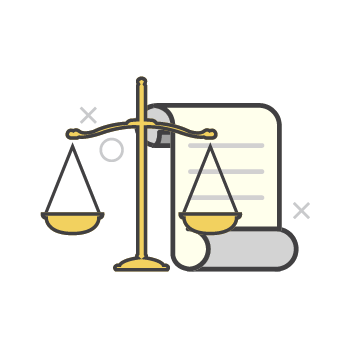Breast Cancer: What You Need to Know
by Chantel DaCosta Oct 16, 2023

Breast cancer is one of the leading causes of cancer deaths among women in the Caribbean. Before we deep dive into what you need to know about the disease, let’s begin with what is breast cancer. We will discuss the symptoms, and treatment options and share how to do a breast self-exam.
What is Breast Cancer?
Breast cancer starts when cells in the breast begin to grow out of control. These cells usually form a tumour often seen on an x-ray or felt as a lump. The tumour is malignant or cancerous if the cells can grow into the surrounding tissues or spread to other body areas.
While this cancer primarily affects women, men can also get breast cancer.
The Symptoms:
Most breast cancer cases have no symptoms until it is discovered on a mammogram. The most common symptom of breast cancer is a new lump or mass. The masses that are more likely to be cancerous are painless, hard, and immobile with irregular edges.
But some breast cancers can be tender, soft, rounded, and even painful.
While the following signs and symptoms can be caused by conditions other than breast cancer, please contact your doctor if you experience any of the following:
- Changes in the size or shape of the breast.
- A lump or thickening in or near the breast, or in the underarm area.
- Swelling of all or part of a breast.
- Skin irritation on or around the breast.
- Puckering in the skin of the breast or dimpling that looks like the skin of an orange.
- Breast or nipple pain.
- Redness or thickening of the nipple, areola, or breast skin.
- Nipple discharge that is not milk.
Some breast cancers spread to lymph nodes under the arm or around the collarbone and cause a lump or swelling in those areas before a tumour in the breast tissue is large enough to be felt.
A Note on Breast Density
Regular mammograms are the best way to detect breast cancer early. Some women have denser breast tissue than others. Breasts will be seen as dense if you have a lot of fibrous or glandular tissue and not much fat in the breast.
Breast density is only seen on mammograms. The breast is made up of dense glandular and fibrous tissue. This can make it hard to see small tumours in or around the dense tissue. When this occurs, your doctor may request both a mammogram along with an MRI to check for cancerous mass.
Diagnosing Breast Cancer
There are a number of tests and procedures that your doctor may use to diagnose breast cancer.
Breast exam: To check for any lumps or abnormalities, your doctor will palpate (feel) both of your breasts and lymph nodes in the armpit.
Mammogram: A screening mammogram takes an x-ray of your breast to look for any abnormalities or changes in your breasts. If anything looks suspicious, your doctor may recommend a diagnostic mammogram to take a closer look at the abnormality.
Ultrasound: In an ultrasound, sound waves produce images of structures deep within the body. A breast ultrasound may help distinguish between a solid mass and a fluid-filled cyst.
Biopsy: In a biopsy, a tissue sample is taken from your breast and sent to a lab for analysis. The lab will determine the type of cells involved in the breast cancer, the aggressiveness of the cancer, and whether the cancer cells have receptors that may influence your treatment options.
Magnetic resonance imaging (MRI): An MRI uses a magnet and radio waves to create pictures of the interior of your breast.
Your doctor may request other tests or procedures if needed.
Breast Cancer Treatment and Care
There are three primary cancer treatment options, these are surgery, radiation, and hormone therapy. The treatment chosen is based on the type of cancer, the stage, as well as your doctor’s assessments.
Here are the treatment options for breast cancer:
- Hormone Therapy: This therapy can be used to shrink and control cancer, or to prevent your cancer from returning after other treatments are completed.
- Lumpectomy: Rather than remove an entire breast, surgeons perform a lumpectomy to remove a small portion of the breast in which there is a tumour.
- Partial mastectomy: Removal of the whole segment or quadrant of breast tissue, and possibly some of the lining over the chest muscles.
- Mastectomy: This captures several different procedures, and in many cases, it means fully removing one or both breasts.
- Radiation: High-energy rays to kill cancer cells or shrink tumours that remain in the breast, chest wall, or underarm area after surgery.
- Chemotherapy: Involves a combination of drugs to destroy cancer cells or slow down their growth.
- Reconstruction Therapy: Women who have had all or part of a breast removed can have their breasts rebuilt to match the size and shape of the other breast or their original breasts. The nipple and areola can also be reconstructed.
How To Do a Breast Self-Exam
A breast self-exam is the way to check your breasts for changes, such as lumps or thickenings. You’ll look at and feel both breasts. If you notice anything unusual, please tell your doctor.
Here are the steps to follow to do a breast self-exam:
- Begin by looking at your breasts in the mirror with your shoulders straight and your arms on your hips. Pay close attention to your breasts, it is time to observe the size, shape, and colours. See if you recognise any changes, bulging of the skin, redness, swelling, change in the nipples.
- Raise your arms and look for the same changes.
- Look for any signs of fluid coming out of one or both nipples. This could be a watery, milky, or yellow fluid or blood.
- Next, lie flat on your back. Using your right hand to feel your left breast and then your left hand to feel your right breast. Use a firm, smooth touch with the first few finger pads of your hand, keeping the fingers flat and together. Use a circular motion, about the size of a quarter. Cover the entire breast from top to bottom, and side to side, from your collarbone to the top of your abdomen, and from your armpit to your cleavage. Follow a pattern to be sure that you cover the whole breast
- Finally, feel your breasts while you are standing or sitting. Some women find it easier to feel the differences in skin when is wet. You can do this in shower if that is where you are most comfortable. Cover your entire breast in the same way described in step four.
The breast self-exam is not recommended solely for breast cancer screening, it is however very important to become familiar with the way your breasts normally look and feel.
If you feel anything abnormal, please arrange to see your doctor immediately.
For more information on breast cancer risk factors and whether you’re in a higher-risk group for breast cancer, please call your local cancer society.
If you believe you may have any symptoms associated with breast cancer, contact your doctor immediately.
Use Find Yello to get contact information for local cancer societies, and support groups, as well as healthcare professionals.
Sources: Centers for Disease Control and Prevention, Everyday Health, American Cancer Society, International Journal for Equity in Health, and Susan G Komen.








